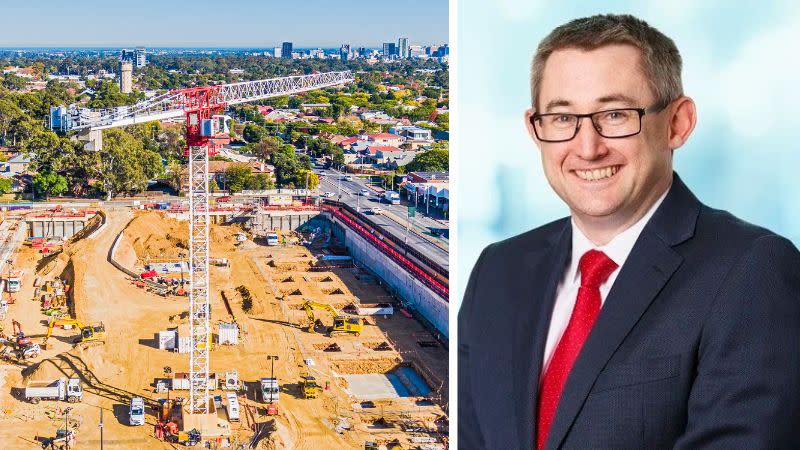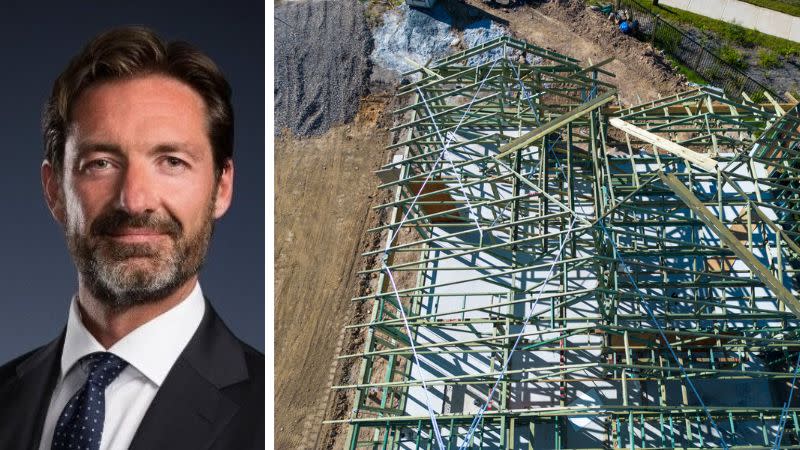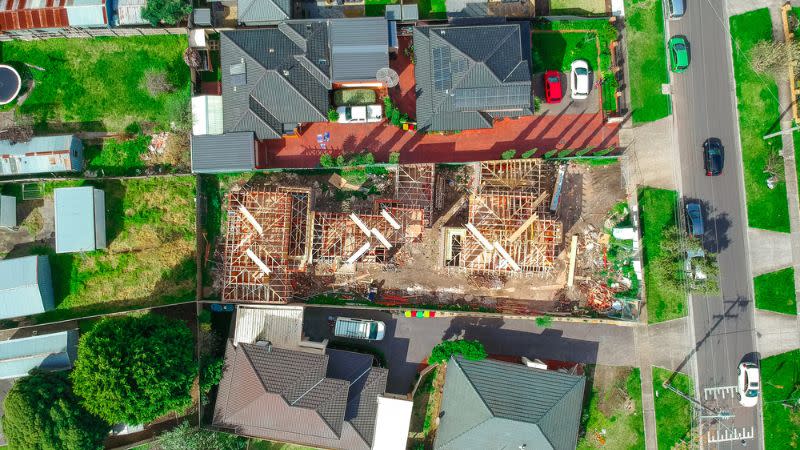Builder collapses have dominated headlines for much of the year and insolvencies have reached the heights of June 2020 according to CreditorWatch.
The crisis gripping the construction industry is widely understood—and not going away any time soon.
On the back of that, developers have been urged to ensure they’re doing all they can to prevent their projects going under if their builder collapses.
Understanding construction risk and regularly assessing financial and non-financial factors to make sure a builder is in the black are crucial to shoring up a project.
“With the non-financial, developers should confirm if there are any issues or disputes with the building commissioner or any defect claims litigation,” HLB Mann Judd Sydney risk and restructuring partner Todd Gammel says.
“Check whether they have a certification of quality and access to warranty insurance.”
When it comes to the financial component, use credit checks to assess the credit quality of the builder.
“Review the balance sheet to ensure adequate equity and working capital to fund projects.
▲ HLB Mann Judd Sydney risk and restructuring partner Todd Gammel.
“This can assist with managing early claims that might be used to front-run the contract if the builder has insufficient working capital to meet the investment required in the initial phase of the contract.
“Also look for related-party loans and other funding arrangements. Review current Personal Property Securities Register registrations, including secured creditors, creditors with specific security and other registrations.”
Understanding a builder’s financial position is all about getting ahead of the curve, McGrathNicol partner Jason Ireland says.
He recommends developers ask builders for a recent profit and loss statement, balance sheet and cash flow forecast.
“Also make sure you get financial information for the relevant entity,” he told The Urban Developer.
“Sometimes the builder will hand over the balance sheet for the larger property group, but the contract is with a special purpose vehicle and the developer is wooed by the large balance sheet of the builder.
“Be very cautious if the builder won’t provide recent financial statements.”
▲ McGrathNicol partner Jason Ireland.
Ireland recommends assessing whether the builder is making a profit and not just generating cash flow.
“It’s a red flag if the cash position is sound but they have not paid creditors and the build has not started,” he says.
Fabrizio Perilli, co-founder and managing director of property group PERIFA, says a poor credit record raises major concerns about a builder’s solvency.
Other warning signs include delayed subcontractor payments, fewer contractors on site than there should be and orders not being placed for materials.
“It’s up to developers to do their homework and talk to the builder,” he says.
Property developers should not be shy about exercising their rights.
“They can insert step-in rights to manage payments on a project to ensure funds are being directed to the relevant subcontractors and suppliers to keep the project moving and ensure warranties are maintained,” Gammel says.
These rights allow for developers to pay relevant parties to avoid cessation of work or services and maintain the project’s momentum if the builder is in financial strife.
▲ Engagement and communication with the builder, as well as access to recent financial information, is vital.
This also allows the developer to engage directly with major subcontractors to potentially resolve any issues that may have an underlying impact on the timing of the project, protecting the outcome for the developer.
When it comes to communicating with builders about financial matters, be sure to build provisions into contracts such as monthly meetings to talk through the financial progress of a job.
“Discuss changes in major supply items and related timelines on a commercial basis to avoid delays or supply issues,” says Gammel.
Perilli agrees engagement and communication with the builder, as well as access to recent financial information, is vital.
“If the builder entered into a fixed price contract in 2019, 2020 or 2021, supply chain issues could mean costs have escalated by 30 per cent,” he says.
“So it’s important to understand the breadth and depth of the builder’s exposure to contracts secured during that time to assess their commercial viability today.”
According to Perilli, it’s all about being across the detail.
“Don’t just rely on the builder to walk you around the site. Have your eyes and ears open and talk to subcontractors, because they are the ones that live and breathe the site on a daily basis.
▲ The collapse of Probuild, while one of the biggest firms to fail, has been just one of dozens of builders to go under.
“Make calls to suppliers and do background checks to make sure everything is in order from a supply chain perspective.”
Talking to other developers the builder is working with is also a smart move.
“In the event a builder is in a financially precarious position, the best outcome is for the developer and the builder to work things through together to share cost increases on an appropriate basis,” Perilli says.
“It’s about being reasonable and coming up with the best outcome possible in a really difficult situation.”
Ultimately, transparency and contract terms are effective ways to ensure developers and builders can discuss the financial position of projects and any material changes impacting the commercial outcome.
“This means potential solutions can be discussed before the value of the project is destroyed,” says Gammel.
When a builder becomes insolvent during a project, it’s often an opportunity for the developer to take control of the job to bring greater certainty in terms of timeline and funding.
“Although unfortunate and undesirable, the insolvency process can end uncertainty around the project and enable a clear plan to be developed,” says Gammel.
You are currently experiencing The Urban Developer Plus (TUD+), our premium membership for property professionals. Click here to learn more.














